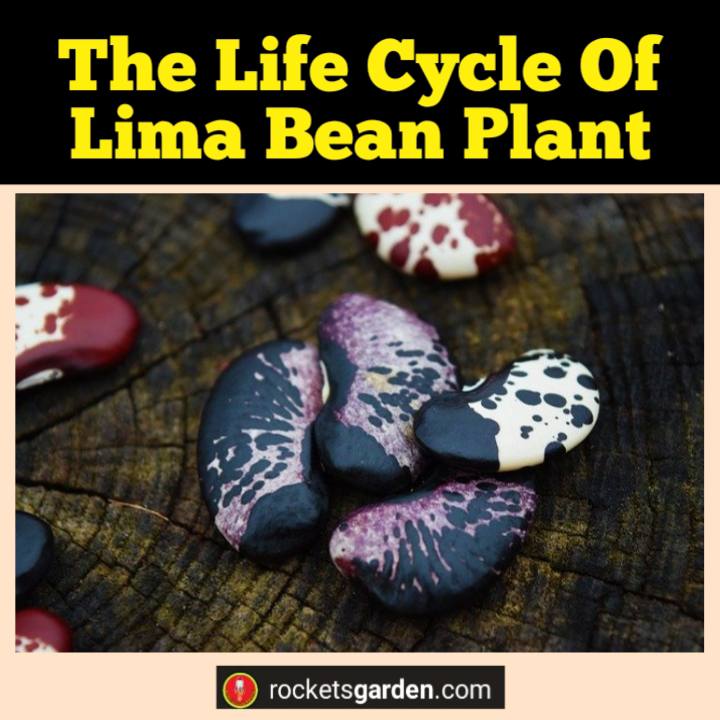
Lima beans are a popular legume that is widely consumed around the world. The Lima bean life cycle is an interesting process that involves several stages, from seed germination to plant growth, flowering, and fruiting.
Understanding the life cycle of a Lima bean is essential for farmers and gardeners who want to cultivate these plants successfully.
Life Cycle Of A Lima Bean: Stages
Lima bean plants go through several distinct stages of growth, from germination to maturity, before they are ready to harvest.
The first stage of a Lima bean plant is germination, which occurs when the seed is planted in moist soil. During this stage, the seed begins to absorb water and nutrients from the soil and begins to grow. As the seedling emerges from the soil, it develops a small root system that helps it to absorb more water and nutrients.
The second stage of Lima bean plant growth is the vegetative stage. During this stage, the plant grows taller and develops more leaves. The leaves are important for photosynthesis, which is the process by which the plant produces its own food. As the plant grows taller, it may require support to prevent it from falling over.
The third stage of Lima bean plant growth is the flowering stage. During this stage, the plant develops small flowers that are used for pollination. Pollination is the process by which the flowers are fertilized and the plant begins to produce beans. Bees and other insects are important for pollination, as they help to transfer pollen from one flower to another.
The final stage of Lima bean plant growth is the maturity stage. During this stage, the beans begin to grow and ripen. The beans will turn from green to a light brown color when they are ready to harvest. Once the beans have reached maturity, they can be harvested and used in a variety of culinary dishes or dried and stored for later use.
What Are The Conditions Required For Lima Beans To Grow?
Lima beans require specific conditions to grow successfully. Firstly, they need a warm and sunny environment with temperatures ranging between 70-80°F. The soil should be well-drained, fertile, and have a pH level of 6.0-6.5.
Lima beans also require adequate water, but overwatering should be avoided as it can lead to root rot. The seeds should be planted in a location with good air circulation to prevent fungal diseases.
How Do You Plant Lima Beans?
To plant lima beans, first choose a sunny location with well-draining soil. Soak the seeds in water overnight to help them germinate faster. Then, dig a hole about 1-2 inches deep and place the seed in the hole with the pointed end facing down.
Cover the seed with soil and water gently. Space the seeds about 3-4 inches apart and rows about 24-36 inches apart. Keep the soil moist but not waterlogged and watch for sprouts to emerge in about 7-10 days.
As the plants grow, provide support with stakes or trellises. Harvest the beans when they are plump and fully matured.
How Do You Care For Lima Bean Plants?
Lima bean plants require proper care to grow healthy and produce a bountiful harvest. The first step in caring for these plants is to ensure they receive adequate sunlight, water, and nutrients. Lima beans thrive in well-draining soil that is rich in organic matter.
Regular watering is essential, especially during hot and dry weather conditions. Fertilizing the plants with a balanced fertilizer every two to three weeks can help promote healthy growth.
What Pests And Diseases Affect The Life Cycle Of A Lima Bean Plants?
Some of the common pests that affect lima bean plants include aphids, spider mites, whiteflies, and bean beetles. These pests feed on the leaves and stems of the plant, causing wilting, yellowing, and stunted growth.
In addition to pests, lima bean plants are also prone to diseases such as root rot, powdery mildew, and bacterial blight. These diseases can cause the plant to wilt, turn yellow, and eventually die.
To prevent and control these pests and diseases, it is important to maintain good plant hygiene, use disease-resistant varieties, and apply appropriate pesticides and fungicides as needed.
How Long Does It Take For A Lima Bean To Grow?
The time it takes for a lima bean to grow depends on several factors, including the variety, soil quality, and weather conditions. Generally, it takes about 70 to 100 days for lima beans to reach maturity and be ready for harvest.
However, some varieties may take longer or shorter depending on the conditions. It is important to plant lima beans in well-drained soil and provide them with adequate water and nutrients to ensure healthy growth and development.
When Is The Best Time To Harvest Lima Beans?
The best time to harvest lima beans is when the pods are fully matured and have turned yellow or brown in color. It is important to harvest lima beans before the pods start to split open, as this can cause the beans to become tough and lose their flavor.
To harvest, simply pull the pods off the plant or use a pair of scissors to cut them off. Once harvested, lima beans can be stored in a cool, dry place for several months.
How Do You Store Lima Beans After Harvesting?
After harvesting lima beans, it is important to store them properly to maintain their freshness and quality. The first step is to remove any debris or damaged beans and then spread them out in a single layer to dry for a few days.
Once they are completely dry, store them in an airtight container in a cool, dry place. It is best to avoid storing them in direct sunlight or in a humid environment as this can cause them to spoil or mold.
Properly stored lima beans can last for up to a year, making them a great addition to your pantry for use in soups, stews, and other dishes.
